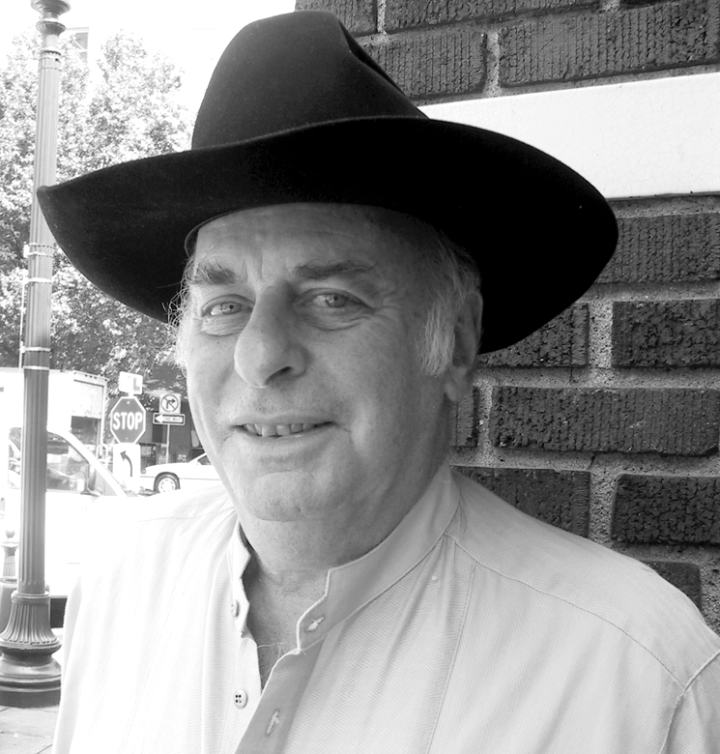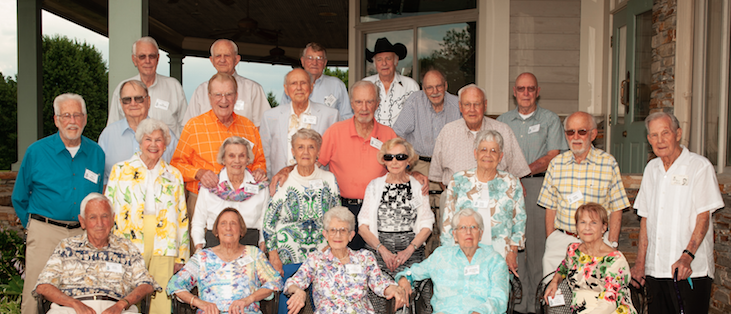BY JERRY STERNBERG
Editor’s note: Opened in 1929, Asheville High School was renamed in 1935 to honor a principal who died suddenly that year. With integration in 1969, it once again became Asheville High.
Can you imagine the shock and amusement that ensued when students at Lee H. Edwards High School walked out of that magnificent edifice to find a small car that some strong, creative pranksters had hoisted up to the top step?
Some members of the class of 1948 may have been involved. They might also have had a hand in filling the school rotunda with condom “balloons” made with hydrogen generated in chemistry class. That incident, plus the little porno comic books passed around in the men’s room that showed Blondie and Dagwood and Maggie and Jiggs in unspeakable positions, were pretty much the extent of our sex education.
When jalopies raced side by side on the sparsely traveled McDowell Street at lunch hour, there may have been a ’48 classmate or two behind the wheel. Class members may also have numbered among the bullies who took the pants off a small freshman and ran them up the flagpole (luckily he had undershorts on).

When the members of this class were born, the nation and the entire world were in a panic — not because these particular little babies happened to arrive then, but because the Great Depression had begun.
We grew up in two decades that tested our parents’ mettle to the limit. Money was scarce, and survival depended on hard work and great frugality. As soon as we were able, most of us were introduced to our first four-letter word: work. Many kids had to work just to help their families survive, but at the very least, some small part-time job was often what provided new clothes and spending money. We also had assorted chores that helped support home life: stoking the wood and coal stoves, hauling the ashes, doing yardwork, dishes and laundry, even painting and repairs.
By the time we were 10 or 11, tragedy had struck again: We were under attack by people called Nazis, and, in the vernacular of the time, Japs and Eye-talians. We were all motivated to become patriots as we began to notice fathers, uncles, brothers and, yes, mothers and sisters disappearing from our small community to fight this menace someplace far away.
Many women took on unprecedented roles to keep our home fires burning, working unfamiliar jobs in our industries to provide weapons and supplies for our brave fighting men. Meanwhile, we kids knitted blankets for the Brits, collected scrap metal and endured rationing. We learned geography one bloody battle at a time, from the nightly broadcasts of Edward R. Murrow, the daily newspaper maps and the movie newsreels. We attended war bond drives and patriotic pep rallies at the Civic Center, and even as children, many of us were encouraged to start a war stamp book. Each stamp cost 25 cents, and when you amassed the impressive sum of $18.75 you could turn in your book and receive your own $25 war bond.
We cheered the convoys of trucks, tanks, heavy artillery and military personnel moving down Merrimon Avenue headed for the ports. Sadly, we also learned about the dreaded telegrams that began “We regret to inform you…” and what a gold star in a window meant.
When some of our friends and family members came back, we saw that they were different from the way we remembered them, and many had debilitating wounds. After Japan surrendered in August 1945, class members celebrated the end of the war. This wild scene played out in Pack Square a mere three weeks before we started our first year at Lee Edwards.
We were well-taught by dedicated teachers who insisted that we excel in our studies. We had an outstanding glee club, an award-winning debate team and a drama department that was second to none in the state. We fielded outstanding athletes, and our football team tried hard to follow in the footsteps of alumnus Charlie “Choo-Choo” Justice, a national football hero.
When we graduated, we had the right stuff. Unfortunately, just two years later, many of us had to put our lives on hold. When we were called to serve, we went without a whimper, remembering the sacrifices of “the Greatest Generation,” and even though we’d never heard of and didn’t care about a place called Korea, we proudly served with distinction.
Our graduates excelled in all walks of life, including medicine, banking, industry, education, clergy and solid citizens who worked diligently to provide for their families. Of course, we did have one or two ne’er-do-wells. One of our classmates was even written up in a fascinating volume called The Book of Swindlers. Still, he was a likable chap, and I guess we can take some perverse pride in the fact that he was the best at what he did.
We held our first class reunion on our 10th anniversary; since then, we’ve had an annual picnic at Lake Julian and a dinner every five years.
Twenty years ago we were the first class to establish a scholarship fund administered by the Asheville City Schools Foundation, providing help for graduating Asheville High students who will attend a college in the North Carolina system. Our well-funded legacy will continue for many years to come.
This year, 24 class members and their guests attended our 70th anniversary reunion at the Broadmoor Golf Links. Undeterred by walkers, canes, wheelchairs and hearing aids, we held a loud and raucus gathering.
As the years go by and the obituaries pile up, there’s comfort in knowing we’re a family whose members enjoy one another’s company and shared memories. We’ll continue to hold our annual picnics, and in a few years we’ll celebrate our 75th anniversary, even if the remaining participants can fit in a phone booth. Our spirit will prevail until the last classmate joins that final reunion in the sky.
The Lee Edwards High School Class of 1948 is a class act.
Asheville native Jerry Sternberg, a longtime observer of the local scene, can be reached at gospeljerry@aol.com.




Jerry Sternberg’s contributions to our understanding of Asheville’s past are wonderful.